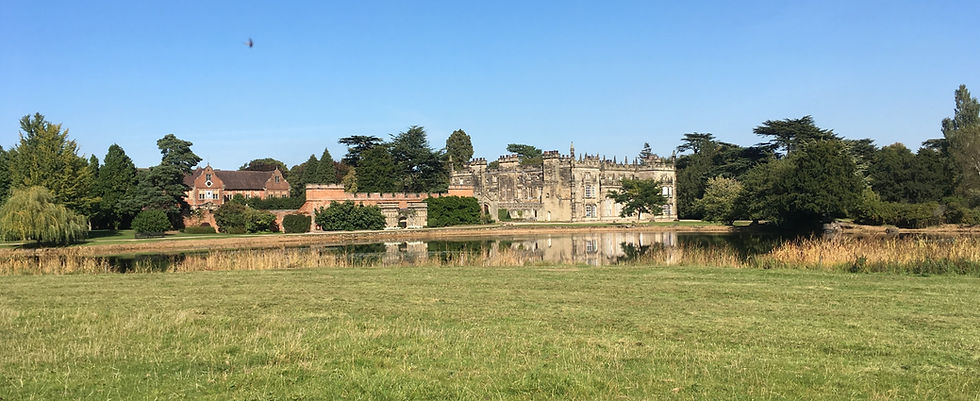George Eliot: where it all began
- Sarah Greenwood

- Nov 26, 2019
- 3 min read
Whether you think George Eliot’s novel Middlemarch is the greatest novel in the English language or not (Martin Amis once said so), it is good to recognise her this November, 200 years from her birth in 1819. I’ve just been writing about George Eliot for Historic House magazine so I’ve unearthed all her country house connections.

It’s perhaps surprising to claim that she has any at all, her novels, after all, are about social conditions (with definite resonance today) but you must surely have noticed that in between the rural folk and small town machinations, she does give us the occasional glimpse of a country squire. So if you think the aristocracy of yore have little to do with such a forward thinking woman who demonstrates, so often, a sensibility ahead of her time, you just might be wrong. I found that her early life on the Arbury estate near Nuneaton in Warwickshire was fundamental in exposing her to a range of characters and a burgeoning industrialisation on which she drew for the rest of her life.
Eliot, whose real name was Mary Ann Evans, was born in a farmhouse at Arbury where her father was the land agent. That farmhouse is still much as it was then and is home to a present-day agent at Arbury who still looks out of the same bedroom window the infant novelist would have looked out of. The family moved out of the farmhouse when Eliot was still a baby so her childhood memories were not of the rural idyll beyond the orchards of the farmhouse but of the quarries and coalmines at the other end of the estate surrounding the village of Griff.
The Newdigate family of Arbury were investors in a range of burgeoning industries in Warwickshire in days when Birmingham was just beginning to make its mark on the map.
The long lived Sir Roger Newdigate (1719 – 1806) is celebrated as the builder of Arbury Hall, one of the most remarkable Strawberry Hill gothick houses in the country. His portrait by Arthur Devis, seated in his new fan-vaulted Library is a classic of the gentlemanly country house genre. It might be equally appropriate to remember him as an industrial pioneer, another artist could perhaps have shown him visiting his coal mines or watching a loaded barge pass on the extensive network of canals he built to carry coal to the markets of London. The coal mines have gone and the canals are now mostly adornments in the park around Arbury Hall but there is still a quarry at Griff and the M69 runs along the route of the old turnpike road established by Sir Roger between Coventry and Leicester. The history of the industrial revolution is just under the surface today but it was a raw part of everyday life at the start of the 19th century. George Eliot grew up in the midst of this industrial ferment and the shifting society it fuelled. The Midlands was rumbling with radicalism and religious dissent, all reflected in her stories.
We know that the young George Eliot had access to Sir Roger Newdigate’s library at Arbury and her education will have had its heart in his choice of books. Since he has achieved lasting fame as sponsor of the annual Newdigate Prize for poetry at Oxford University, it isn’t hard to see Arbury as cradle of George Eliot’s own literary ambitions. It is likely that the well travelled Sir Roger Newdigate himself, though she never knew him, inspired both Sir Christopher Cheverel in Scenes of a Clerical Life and Sir Hugo Mallinger in Daniel Deronda. Without Sir Roger and Arbury, Mary Ann Evans might never have become George Eliot at all and I couldn’t be more pleased to discover a close connection between one of my favourite novelists and a fascinating country house.







Comentarios